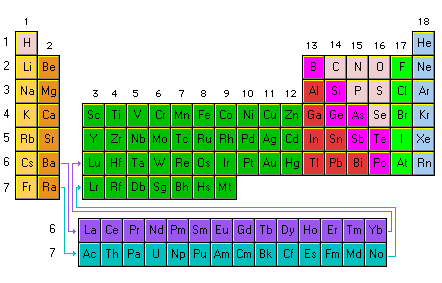 An ecosystem is called the set of living and lifeless beings that exist in a given place and that have relationships with each other.. The concept was introduced in the mid-twentieth century by ecologists to account for the object of study of ecology. It is important to emphasize that the notion of ecosystem is conventional and relative, which is why it admits some variants of specific use. For example, each ecosystem can be divided into others of smaller size and complexity.
An ecosystem is called the set of living and lifeless beings that exist in a given place and that have relationships with each other.. The concept was introduced in the mid-twentieth century by ecologists to account for the object of study of ecology. It is important to emphasize that the notion of ecosystem is conventional and relative, which is why it admits some variants of specific use. For example, each ecosystem can be divided into others of smaller size and complexity.
An example of these theoretical postulates can be offered by a forest. In this there are innumerable living beings that interact with each other (biotic factors), in addition to lifeless factors such as water, air and minerals, which are necessary for the development of life in some cases while in others they are at least linked to it (abiotic factors). However, it is also possible to refer to the treetops of the forest as an ecosystem to the extent that they fall within the definition used.
With these approaches are related the concepts of ecological niche and habitat. In the first case, mention is made of the aforementioned relationships that biotic beings have with each other and with abiotics.; These include conditions of temperature, humidity, light, feeding mode, diseases, etc. In the second case, an allusion is made to the physical environment of the ecosystem to which the different species of this are adapted.
The ecosystem may experience the gradual change of some of its elements for others. Thus, for example, new plant species may appear. This phenomenon is called ecological succession. When the appearance of life takes place in an environment that never had it, we speak of primary succession, while in the opposite case we speak of secondary succession.
There are many biologists who amplify this concept in stratified versions, that is, they prefer to define a set of ecosystems that are more or less stable in their components and dynamics to give rise to a sort of higher "taxon", usually called a biome. Thus, each of the small ecosystems typical of a jungle region, united and interacting with each other, give rise to the biome called tropical forest or rainforest. Similarly, on an inverse scale, a simple home pot is an entire ecosystem, in which abiotic factors (earth, water, solar energy, air) are integrated with biotic components (sown vegetable, weeds, insects, worms, microorganisms ) in a game of mutual relations with interaction, in some cases with advantages for both elements (symbiosis: aphids and ants) or at least one of them (commensalism: the spider that hides in the flower of the same color) or, for on the contrary, with deleterious effects for one of the members (parasitism: mealybugs that devastate the crop).
On the other hand, some relationships between living beings with peculiar characteristics have transcended from symbiosis alone and, today, are defined by science as real ecosystems. In this way, the presence of normal bacteria in the intestine of humans, commonly known as microflora, is considered by many experts as a real ecosystem, in which the local environment is the abiotic factor and the various microbial species constitute the biotic component. The stability and protection of this "ecosystem" is beneficial for both microorganisms and humans, while its anomalies are associated with mutual harm.
It should be noted that this description in terms of ecosystems can also be applied to aquatic environments, although in general terrestrial ecosystems are more complex. In addition, mixed systems, such as air-ground or coasts, which constitute ecosystems of great complexity due to the dynamics of each component that integrates them. Finally, there are surprising ecosystems in absolutely hostile environments, such as the edge of volcanoes, Antarctica or deserts, which shows that the diversity of life is capable of proliferating in the most adverse contexts.




